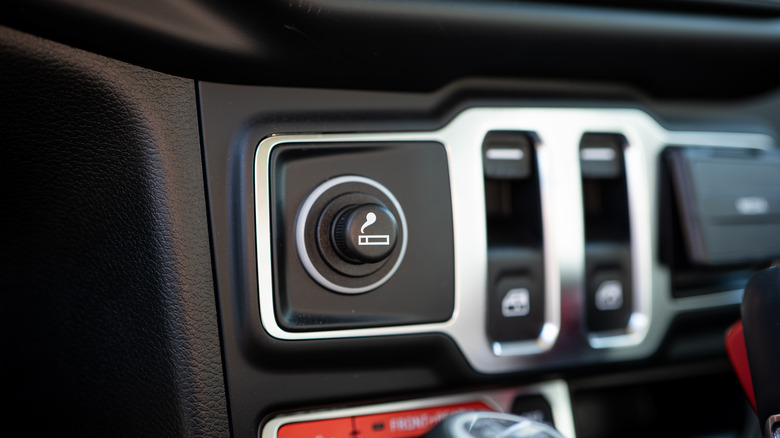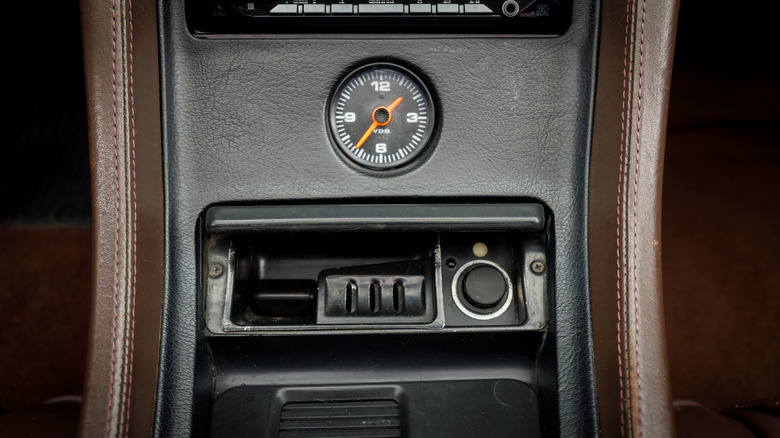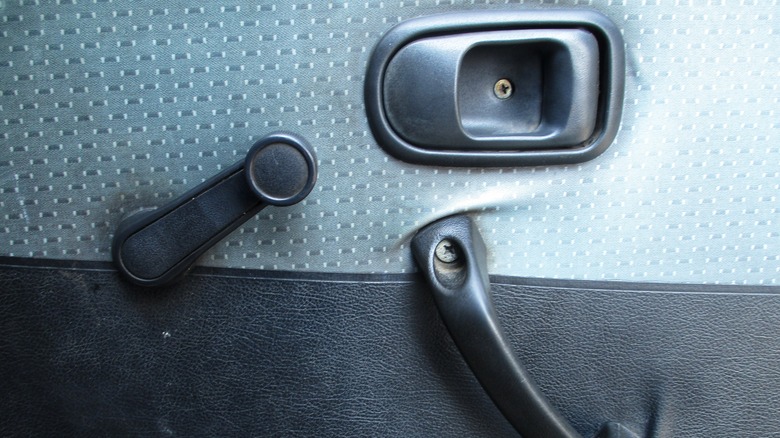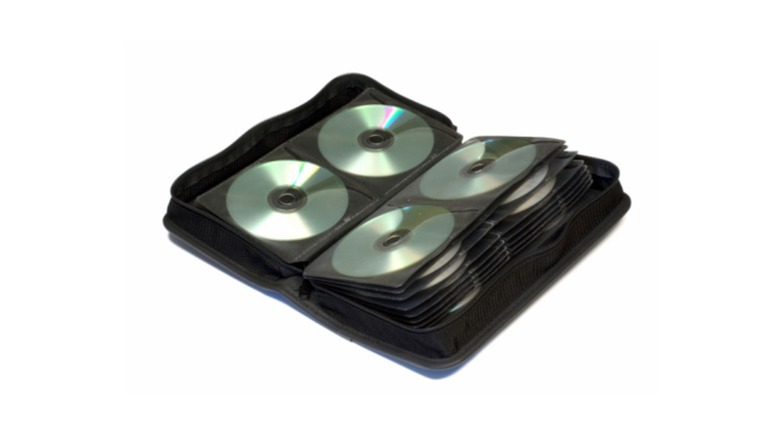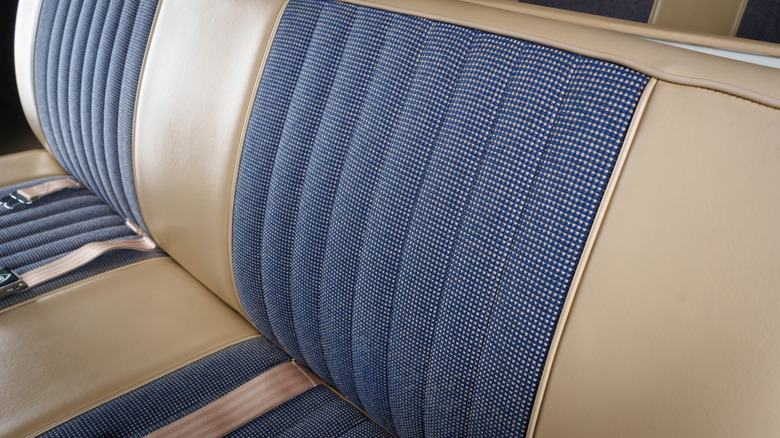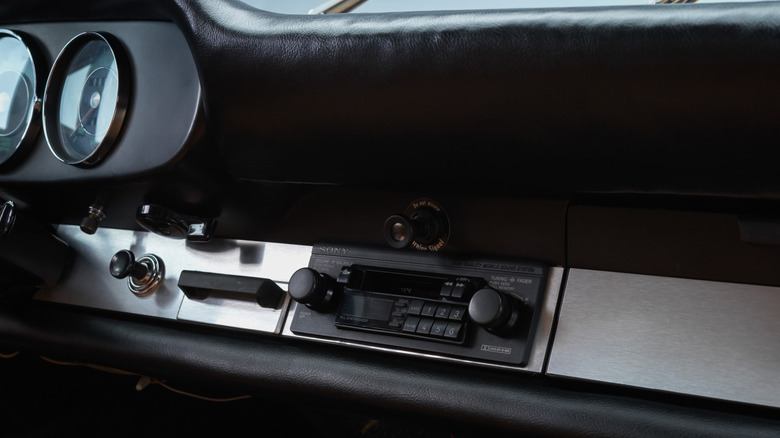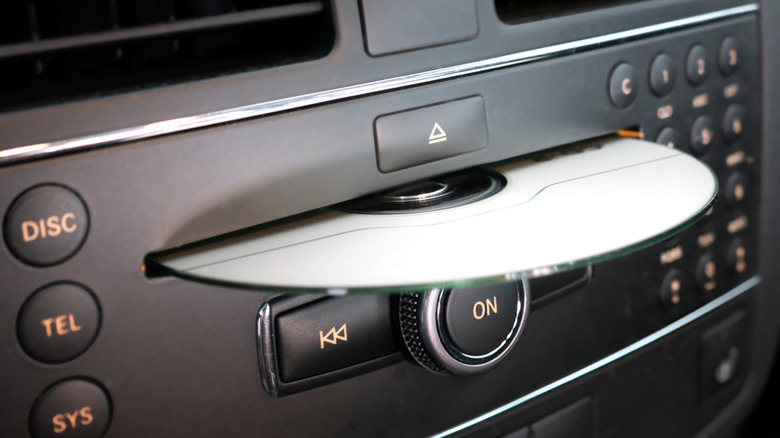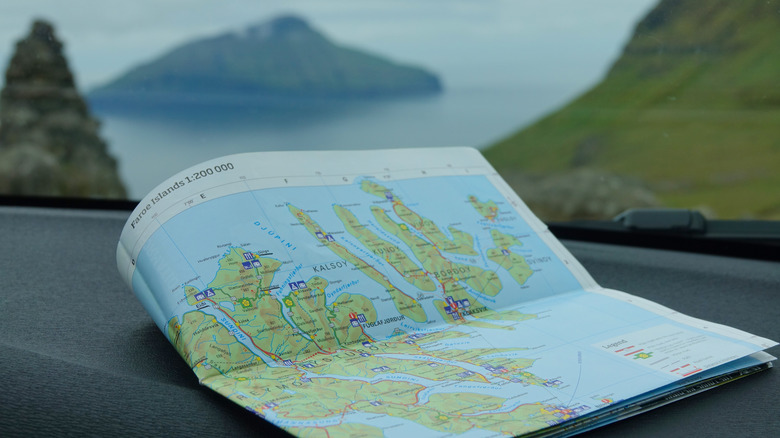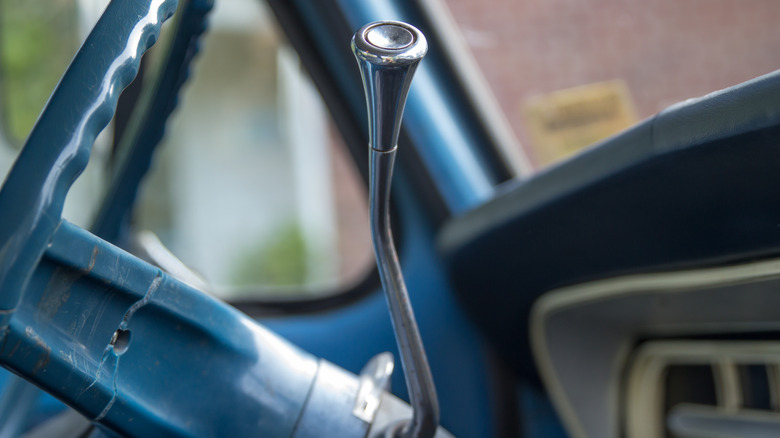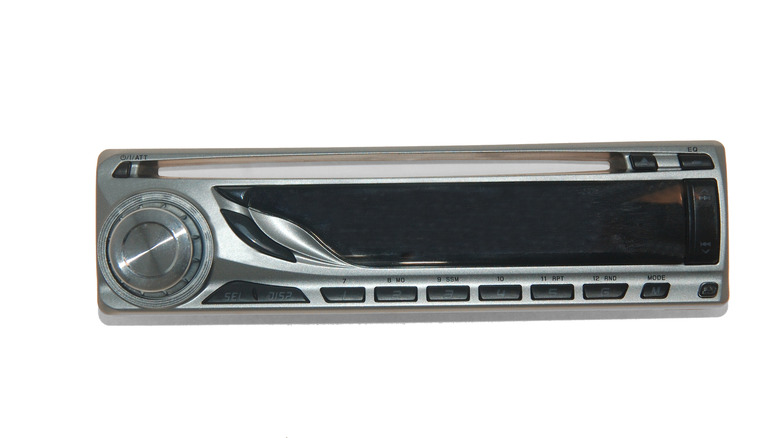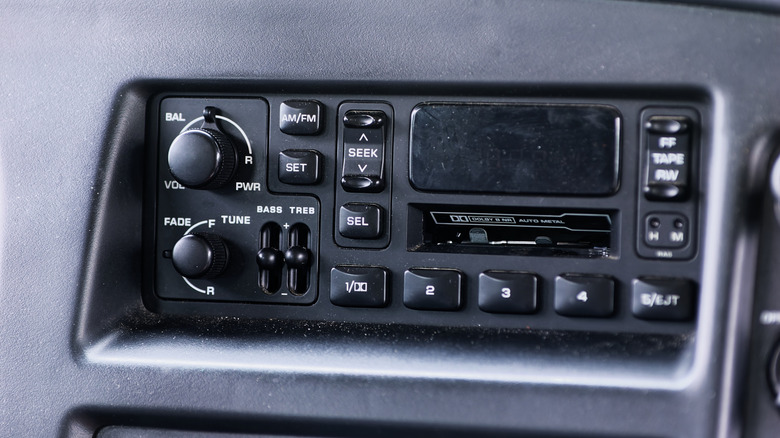13 Things You'd Find Inside 90s Cars You Can't Help But Miss
The 1990s introduced us to translucent electronics, dial-up internet, the PlayStation, and fears of Y2K. They were wild times whose effects still linger in pop culture, and many Millennials and Gen Xers still pine for that '90s nostalgia — nostalgia that extends to automobiles. Before we had flat screens in dashboards and push-button ignitions, we had basic car technology that didn't run on computers. Manual transmissions were fairly common. Fuzzy dice and scented trees hung from rearview mirrors. And cars didn't usually cost so much that it took over six or seven years to finance.
Besides these favorite car features, cars from the '90s packed plenty of other items that might make you wax sentimental. They didn't have the flashiest technology, the most convenient features, or the most comfy, cushy interiors, but they had plenty of thoughtful details that made driving a pleasure. Here are 13 things you'd like inside cars from the '90s that you can't help but miss.
Cigarette Lighters
Whether you were a smoker or not, having a cigarette lighter in a car is something a lot of people miss. In the '90s, having a cigarette lighter in the car's dashboard was a signature staple. This little spring-loaded gadget took a minute or more to heat up, then popped out with a blazing hot tip ready to light whatever needed lighting. If you didn't smoke, you most certainly used the 12-volt port to charge your cellphone (in the late '90s) or power other devices.
Today, you can still find this 12-volt outlet, sans cigarette lighter. Most cars have included USB ports either in place of or in addition to the 12-volt outlet. However, USB outlets aren't as universal, especially since technology keeps changing. The beauty of the old cigarette lighter and outlet is that it was universal; it didn't matter if your car was old or new, it was something you could count on without upgrading your entire electronic arsenal.
Ashtrays
Cars with cigarette lighters naturally needed built-in ashtrays. In the '90s, we still had restaurants with smoking sections and large ashtrays on every corner. As much as 25.5% of people smoked back then, so having ashtrays felt like a basic necessity for many. That figure has since dropped to 11.6%, so dedicated ashtrays don't make as much sense as they used to.
Back then, ashtrays were usually built into the dash near the center gear shifter or as pop-out pockets on the doors. Either way, they were hard to clean, and the smoky smell never escaped. Non-smokers usually used them as change holders, places to hide valuables, mini trash cans, or as catch-all areas. Either way, they easily collected dust and grime and needed to be cleaned often. Modern cars now use these former spaces for cupholders or carved-out niches, which can hold change or other small items.
Manual Windows
Young drivers today will likely never appreciate how much work it took to roll down a window (or understand where the phrase "roll down the window" came from). In the '90s, it required effort to get fresh air or talk to the speaker box in the drive-thru lane. More cars started getting electronic windows during this time, but for the most part, you had to open the window the old-fashioned way.
Despite the extra effort, a manual window crank was actually pretty fun, especially for kids. There was something oddly satisfying about spinning the crank as fast as you could. And since manual windows didn't rely on electronics, they almost never broke. If the car's battery died or you were sitting in the car without the keys, you could still open a window and enjoy some fresh air. You also had the freedom to open the window as much or as little as you like, unlike the awkwardness of trying to find the perfect opening with power windows.
CD Wallets and Visor Storage
As CDs became the music media of choice, CD storage solutions started popping up in cars. These weren't built into the cars, but rather made as aftermarket accessories. Cars started replacing cassette tape players with CD players, creating the need for portable CD storage. The CD wallet was a popular one: a large zippered pouch with "pages" of CD-sized sleeves. Rather than carrying a bunch of hard plastic cases, the CD wallet let you catalog the discs and their inserts in a binder-like book.
Another option was the CD visor, which attached to the sun visor in the car. This put your favorite music right over your head. You could easily slip out a favorite disc and pop it into the CD player while driving. These visors usually held 12 or so CDs, which were more convenient to use while driving than a bulky CD wallet. Both have since gone the way of the dinosaurs as modern cars have opted for streaming services and Bluetooth connectivity instead of CD media players.
Front Bench Seats
Today's cars share the same basic seating configuration: two front seats separated by a center console and gear shifter. In the 1900s, front seating looked a little different. Many cars had a bench seat that included a middle seat, and all the seats were connected (like a bench). Sometimes, you could fold the backrest of the middle seat down, giving you an armrest if you were sitting in one of the two main front seats. These were especially common in trucks or large sedans.
This setup was practical for families. Parents could sit closer to their children, plus kids got a great view from the front seat. It was also ideal for date nights, as two people could sit side by side without the separation of a center console. It offered more room to stretch your legs or shift around during long drives. At the very least, it gave the car an extra seat so that more people could ride together. People miss the bench seat and the feeling of closeness and togetherness it provided.
Cassette Players
For much of the 1990s, the cassette player was the heartbeat of every car. They replaced eight-track players and gave car owners an easy way to enjoy their favorite music on the go. They were easy to operate and didn't require a learning curve to use if you got a new car. People loved cassettes because they were fairly cheap and worked predictably. Double-deck players let you make your own copies of cassettes, or you could record songs off the radio so you could play them in your car later.
Naturally, they also had their shortcomings. There was no quick way to skip ahead to another song. Finding a certain song or place in the song required a lot of rewinding and fast-forwarding. Tapes would also wear out quickly and were easily damaged. Eventually, CD players started replacing cassette players in the '90s, and the mixtape became a dying art.
CD Players
CD players came in all shapes and sizes in the 1990s. If you had one, you were likely seen as a trendy, modern driver with money to spare. CD players provided high-quality audio and didn't "eat" your music the way that cassette players did. (You just had to worry about CD scratches.) Most of them were factory CD players built into the dashboard of the car, where the cassette player would have gone.
Others came in the form of multi-disc CD changers, and they lived in the trunk of the car (yes, really). Some car makers thought it was a good idea to trade convenience for function in the form of storing multiple CDs at once. The catch: you had to get out of the car, open the trunk, and swap out your CD collection. From there, you could use dashboard controls to play the different CDs you loaded beforehand. If you got tired of cycling through the same 3-8 discs on a road trip, too bad. At least until your next gas or food stop. Nowadays, most cars have replaced CD players with music apps on flat screens or enabled Bluetooth so you can play music from your phone.
Fold-Up Maps and Atlas Books
Before the days of the Google Maps app, or even before standalone GPS devices, people used real maps and Atlas books to find their way around. Paper maps were common for places that people traveled to often. They were usually city-speciifc or region-specific since they took up so much room. For longer road trips, like those across multiple states, an Atlas was an essential tool. Atlases contained maps for each state, and sometimes zoomed-in maps for popular cities and areas.
Each map or Atlas showed the main highways of the area. It was up to you to connect the dots and plot your route. You also had to buy a fresh Atlas each year or two, since road construction would make maps obsolete quickly. There was no indication of road construction, no heads-up about highway accidents, no real-time traffic alerts, or any of the other little convenience features of Google Maps that could help with route planning. You just had to drive and hope for the best.
Column Gear Shifters
Most of today's cars have a gear shifter between the two front seats. It might be a large knob with a button, a round dial, or even a series of buttons or switches. In the 1990s, however, it was common for cars to put the gear shifter in an entirely different place: attached to the steering wheel. This was called a column gear shifter, and while some trucks might still have this type of shifter, it's not as popular as it once was.
Back then, the column gear shifter made sense. There wasn't much room for a shifter in the middle since many cars had bench seats. It also helped to differentiate automatic cars from manual transmissions, as manual cars still had the shifter in the middle. They were especially practical for drivers who needed the extra space in the middle for lunch boxes, luggage, cupholders, or other gear. Since they're not typically found in modern cars, they've become a symbol of classic cars that people miss. Good news, though: if you're a fan of this feature, these modern cars are bringing them back.
Stereos with Detachable Face Plates
If you couldn't afford to buy a car with a CD player or otherwise weren't ready to trade up, you could retrofit a CD player for just a few hundred bucks. It was a cheaper route for many drivers, giving them the option of high-quality sound without the expense of a new car. Car audio technicians would remove the cassette player and replace it with a CD stereo, usually with a detachable faceplate. The faceplate would pop off with the push of a button and be stored in a separate case whenever you weren't driving.
If you didn't have one of these in the '90s, you might wonder why the faceplate needed to be detachable. Back then, retrofitted car CD players were targets for car break-ins. They were easy to rip out of the dashboard, and tempted thieves would not hesitate to do so. But by detaching the faceplate, the stereo would be essentially useless. It was a cheap theft deterrent; remove the faceplate and hide it under the seat or take it with you in your backpack or purse. The stereo would not work without it. When you return to the car, replace the faceplate and use the stereo as usual.
Analog Dashboard Gauges
Before car dashboards went digital, they used analog gauges and controls. Speedometers, tachometers, and fuel gauges used needles and carefully marked lines to show you your car's current "stats." They were easy to read at a glance, and you could see your car accelerating or using fuel in real time. There was no lag like you sometimes get with digital controls.
These controls were unique to each car and helped to connect the car to the manufacturing brand. Each make and model had its own set of fonts, backlighting, and needle movement. Back then, it was a subtle part of what sold the car, a key piece of the overall driving experience. Some had sporty red lines. Others had warm glows or elegant chrome rings. It felt like a cozy cockpit-like interior, something that drivers still miss. Reliability was a key factor, too: these gauges rarely glitched, and they never required software updates.
Real Dashboard Buttons and Knobs
Touchscreen dashboards have been making their way into cars for the last decade or more. Prior to this, cars used real physical buttons and knobs to control things like air conditioning, fan speed, and music volume. It's a feature that's highly missed in a world lacking tactile features.
In the 1990s, real buttons, switches, and knobs were the only option. You'd use a real mechanical feature to do just about everything, like changing the radio station, adjusting the temperature, or flipping on the defroster. There was a dedicated control for everything, and you could usually find which one you needed by touch alone. Dials and buttons made distinctive clicks you could hear and feel, giving you instant feedback that you accomplished your task. It's a stark contrast to today's flat-screen elements, where buttons and functions are flat and all feel the same. Nowadays, you have to take your eyes off the road or swipe through menus, or just hope you've found the right function.
Pop-Out Cup Holders
People love their cupholders. It's not uncommon to find cars today that have 2-3 cupholders per seat. Back in the 1990s, this wasn't the case. Car manufacturers didn't make cupholders as much of a priority as they do today, and when cars did have cupholders, they were found in the oddest places (and often weren't very functional). One unique way they integrated cupholders into cars in the '90s was to make them "pop out."
These hidden cupholders usually popped out of the dashboard or center console. You could pull them out when you needed them, then get them out of the way when you're done. In some cases, you might not even know they're there until you stumble upon them unexpectedly. People miss these cupholders because of their charm and ability to surprise and delight. They saved on space and helped to keep the car's interior clean and free of clutter. And despite their sometimes delicate look, they were surprisingly sturdy.

